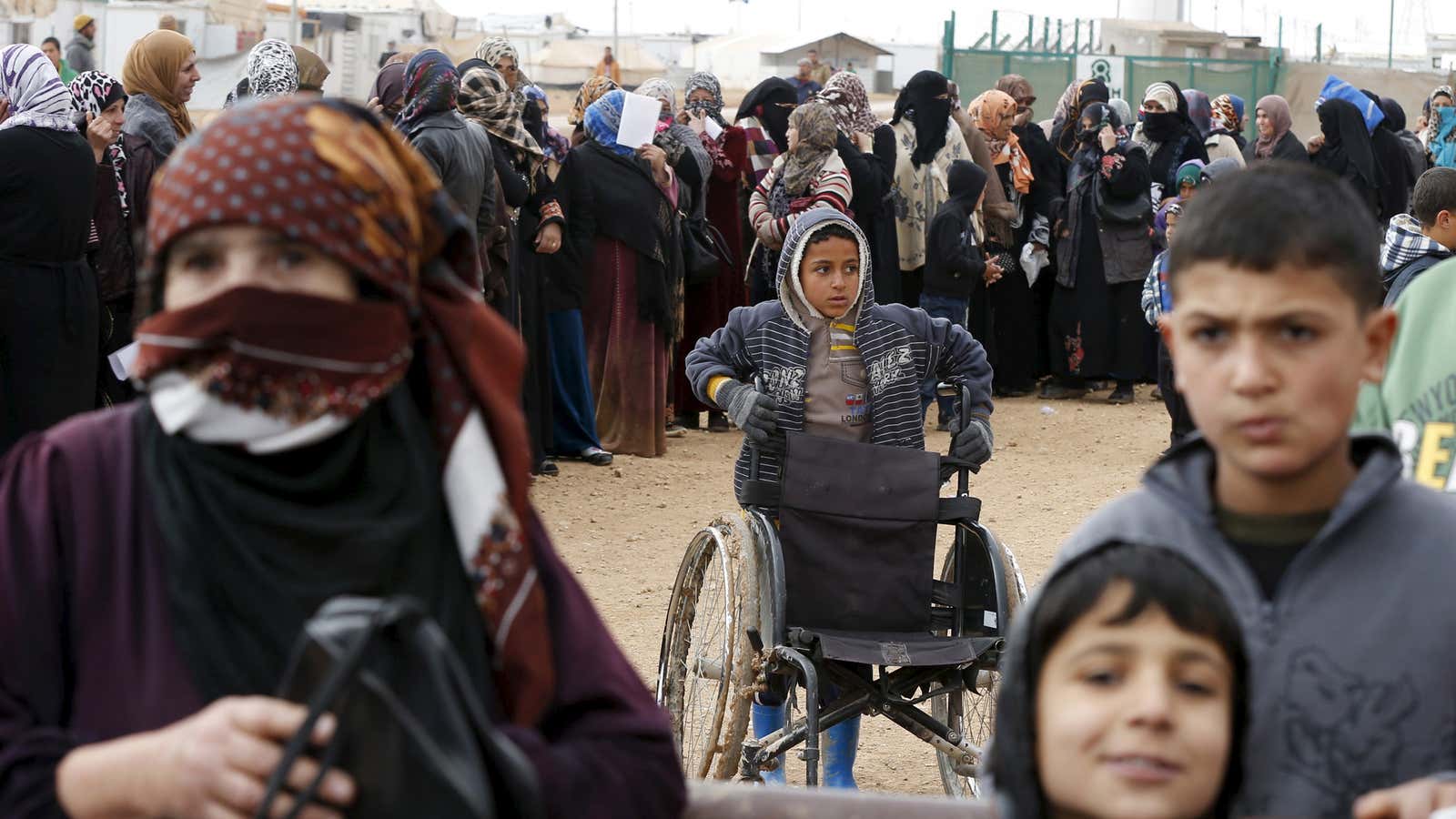US president Donald Trump’s new travel ban, signed March 6, won’t be rolled out for a few days, but a look at the historic flow of people from the six Muslim-majority countries it blocks provides a picture of its potential impact.
The US accepted roughly 108,000 citizens from Iran, Libya, Somalia, Sudan, Syria, and Yemen during fiscal year 2015, according to an analysis by the Migration Policy Institute, a Washington, DC-based think tank. Around 65,000 came to the US on nonimmigrant visas such as student visas. Another 30,000 or so were granted legal permanent residence. The rest were refugees.
That’s a tiny sliver of the total number of foreigners legally admitted to the US every year—just 0.1% in fiscal year 2015, for example. Overall, people born in the six banned countries make up 1.5% of the US population, according to data compiled by the Migration Policy Institute.
When it comes to refugees, though, citizens from travel-ban countries make up a significantly larger proportion. Last year, they accounted for nearly a third of the refugees accepted by the US.
Refugees, people who the US has determined face persecution in their home countries, will likely be the group most affected by the ban. They are also the ones who presumably need to come to the US the most.
